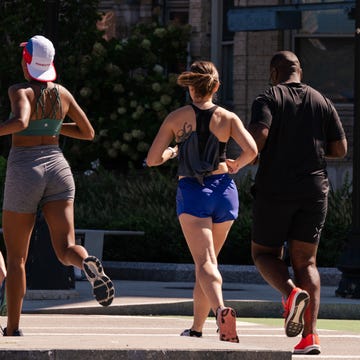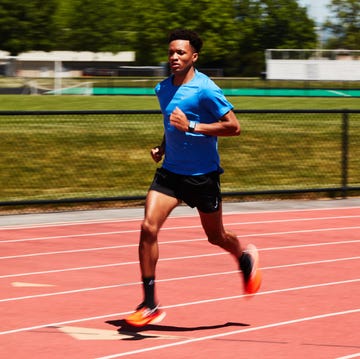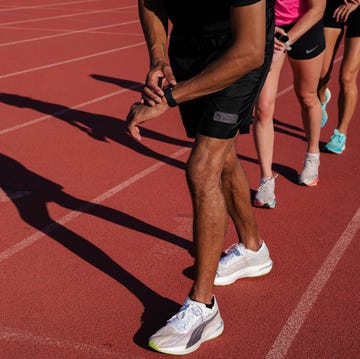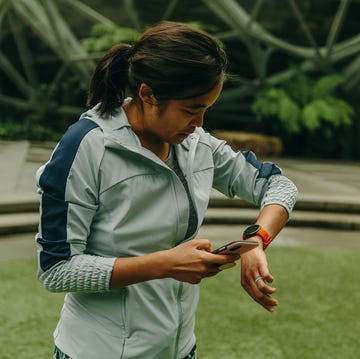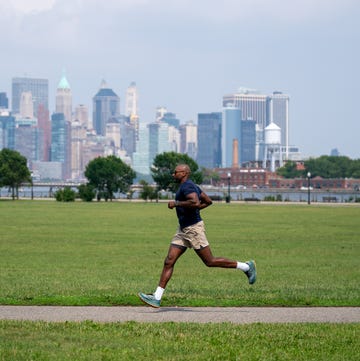It was a hot summer afternoon on Cold Soil Road, and I had just finished the “First Speed Run,” a guided run in the Nike Run Club app. It included eight one-minute intervals interspersed with one minute of recovery. The virtual coach of that run prescribed different speeds, including a mile pace which was “fast,” a 10K pace which was “faster, but slower than a mile pace,” and the slowest of the three, a marathon pace. No matter how much I tried, I couldn’t run at different paces. Over the course of my various flirtations, romances, and relationships with running, I’d always seemed to move at only two speeds: run and walk.
Disappointed and discouraged, I checked to see the name of the next guided run, hoping it wouldn’t force me to struggle, yet again, with unrealistic speeds. The name? “Find Your Pace.” Excited about this fortuitous opportunity, I pressed download and started this short workout even though I had just struggled through the previous one.
Fortunately, Coach Cory, who led this particular guided run, never once asked me to check my Fitbit for metrics and pace. Instead, he only referred to the Rate of Perceived Exertion, a metric that has been around for decades, but that I had, to be honest, ignored for all of that time. RPE is a purely subjective scale from 1 to 10. Typically, 1 refers to an effort level similar to sitting on your couch (i.e., no effort at all), and running at a 3 is a warmup effort. On the other end of the spectrum is 10, an all-out sprint, a pace you can’t sustain for more than half a minute.
Coach Cory explained that my effort level, or exertion, correlated to a variety of distances. For example, I should strive to run a 10K at an RPE of 6, a 5K at 7, and one mile at 9.
He also suggested that runners connect words to different effort levels—for example, the word “strong” when running at the RPE of 6. Honestly, though? At 6, I thought, This is hard, and at 7, I can’t do this. By the time I reached 9, I thought, I have to stop. Coach Cory, on the other hand, suggested I use the word “epic” to describe my fastest pace. He’s clearly an optimist.
These were very short intervals, so my breathing and heart rate didn’t rise much. But the difference I felt between this run and my previous runs was notable: I was pushing myself in a way I had never done before. I followed Coach Cory’s instructions back and forth on the same block, and not once did I look at my Fitbit or the app to see how fast I was going, which is what I was instructed to do during my previous runs. The whole exercise was over in 10 minutes. You may be thinking, Well, okay, but how fast were you? Did you actually run at different paces?
Turns out, yes, I did. Even more shocking, I had truly picked up speed during these intervals. My mile pace was 9:21, my 5K was 10:30, and my 10K was 10:54. Faster than I’ve ever run during a training run or race. During that one short workout, I realized I could create different paces based on my effort rather than trying to “find” different paces for each race distance.
I know that might seem like semantics, but the difference is meaningful. “Finding” something isn’t in your control, but “creating” is. When a training plan listed different goal paces, I couldn’t seem to reach them, but when I ran based on my RPE, I was able to distinguish between different efforts, and those effort levels translated to mile, 5K, and 10K paces.
This run was memorable. It gave me a boost to not give up on myself or my training. It let me know what was possible if I kept training. Now when a race plan instructs me to run at a 5K or 10K pace, I don’t worry about the speed metrics. Instead, I focus on my effort. Turns out I can create paces even if I can’t find them.
Donna Raskin has had a long career as a health and fitness writer and editor of books and magazine articles. A certified run coach who has practiced yoga for many years, she also loves to lift weights, dance, and go for long walks with her hound dog, Dolly.


